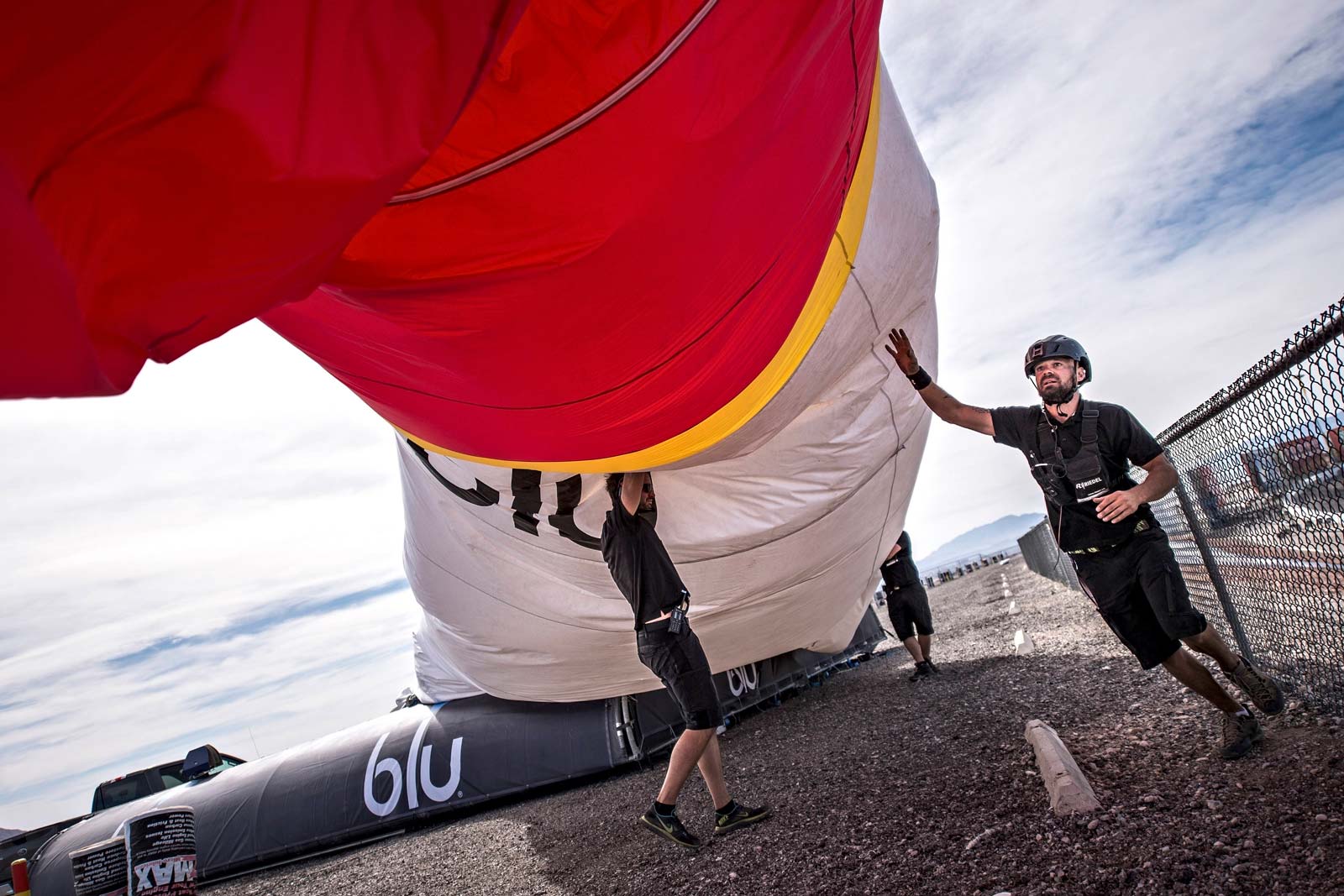Made up of three teams of five people — plus their captain, Holger Leprich — the Airgators are a fundamental part of the Red Bull Air Race. Each team, placed at different spots across the racetrack, must be able to get to any pylon as quickly as possible to put them back up should an aircraft touch one, so that the next competitor doesn’t have to lose time waiting around and circling in the air. Another one of their jobs is to set up the Air Gates: metre-high metal structures encasing all the pylon’s material.
On the Airgators team, everyone has to be prepared for anything: waves, wind, or lots of ripped pylons. The worst is the wind or when there’s a strong storm, as the conditions make it impossible to work and compromise the pylons, which should be easy enough to break so that the pilots don’t even notice, but sturdy enough to resist wind speeds of up to 30–40 kph in regular conditions.
Todos los integrantes de los Airgators tienen que estar preparados para cualquier cosa: Olas, viento o una gran cantidad de pilones rasgados. Lo peor son los vientos o tormentas fuertes, ya que hacen imposible trabajar y ponen en compromiso los pilones que deben ser lo suficientemente fáciles de romper como para que el piloto no lo note y lo suficientemente resistente como para soportar vientos de 30 o 40 km/h en condiciones normales.


In order to give it their all during races, the teams have one or two days of practise before each event. This practise can vary depending on whether the race is over land or water in addition to other conditions, such as wave strength, wind, and the positioning of the Air Gates. They also practice setting up the pylons, simulating tears and constantly trying to improve their time. If things get complicated, all of this practise will prove valuable to deal with unforeseen complications. This practise also helps the teams get used to the distances they’ll have to cover and how they’ll get to the pylons. Whilst they use pickup trucks in races over land, they need boats to get to the pylons in races over water. The procedure is similar in both cases, though the pylons are set up differently depending on whether the race is over land or water.
The pylons themselves are hollow, about 25 metres tall and five metres wide at the base and 0.75 at the tip. They have a petrol engine with a propeller that expels air and maintains the pressure inside. Maintaining the right pressure is vital for the pylons to remain steady: if it’s too low, the pylon might not break and therefore not do its job, but if it’s too high there can be excessive impact with the plane. The pressure is measured constantly, and if it’s too low or too high the engine adjusts its speed accordingly — and if that doesn’t work, it alerts a team member of this problem.


In recent years, some 2000 pylons have burst upon contact, which means the formula works extremely well. New materials are also incorporated each year, allowing the Airgators to stay one step ahead. The pilots often don’t even realise they’ve torn a pylon, and that’s the best sign of a job well done.


 Join Us
Join Us  Join Us
Join Us 